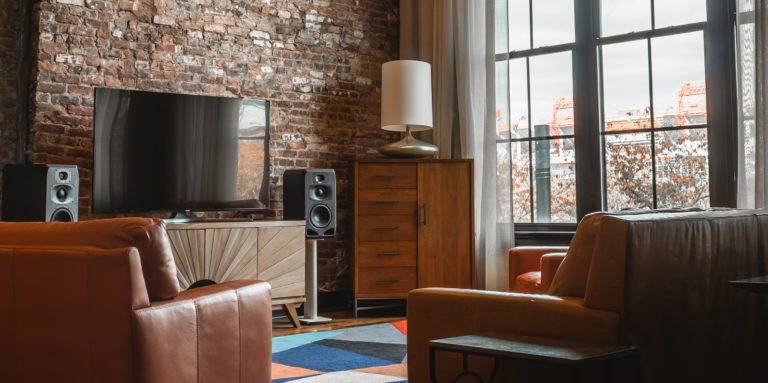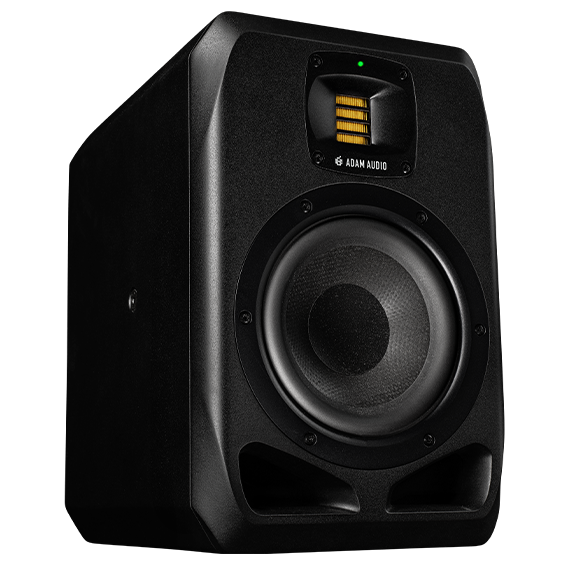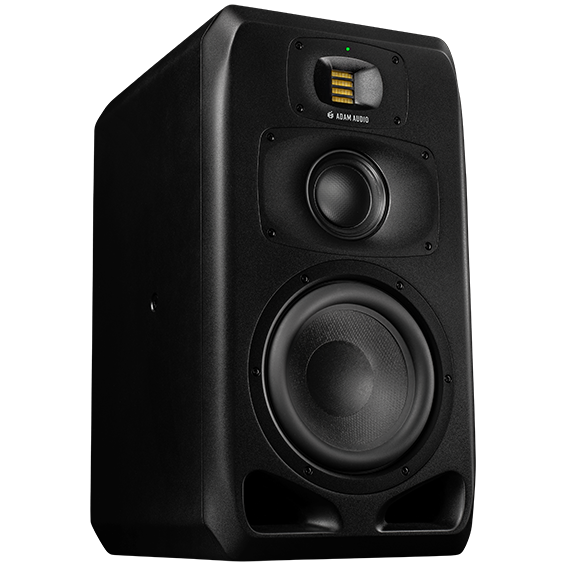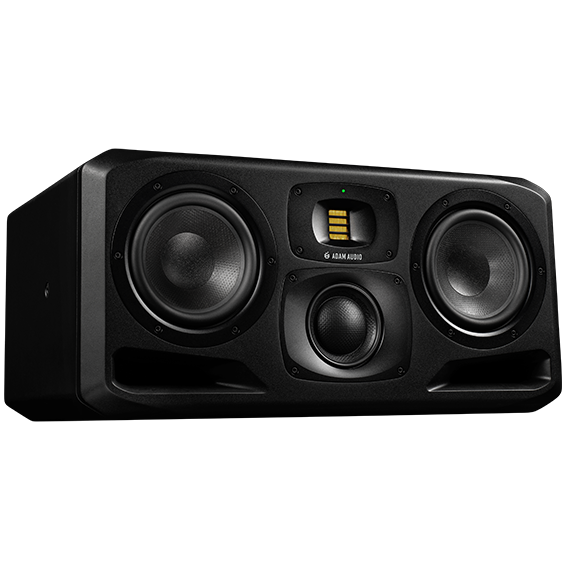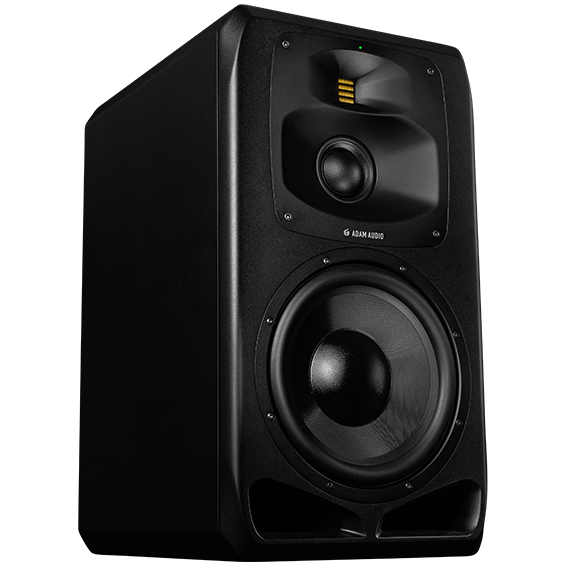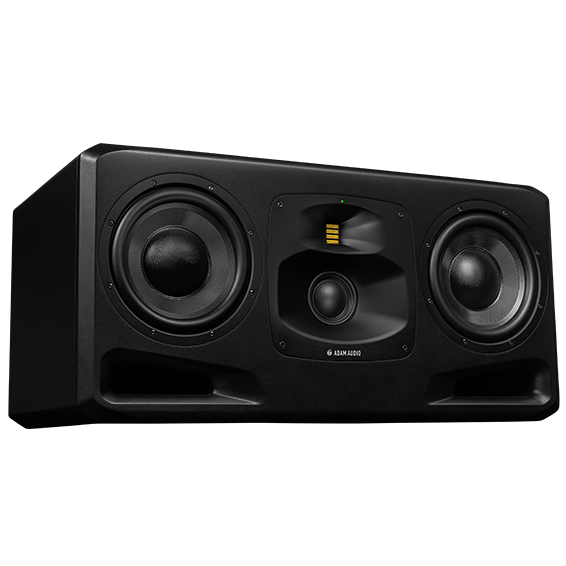Hear it like sound engineers do
The S Series from ADAM Audio
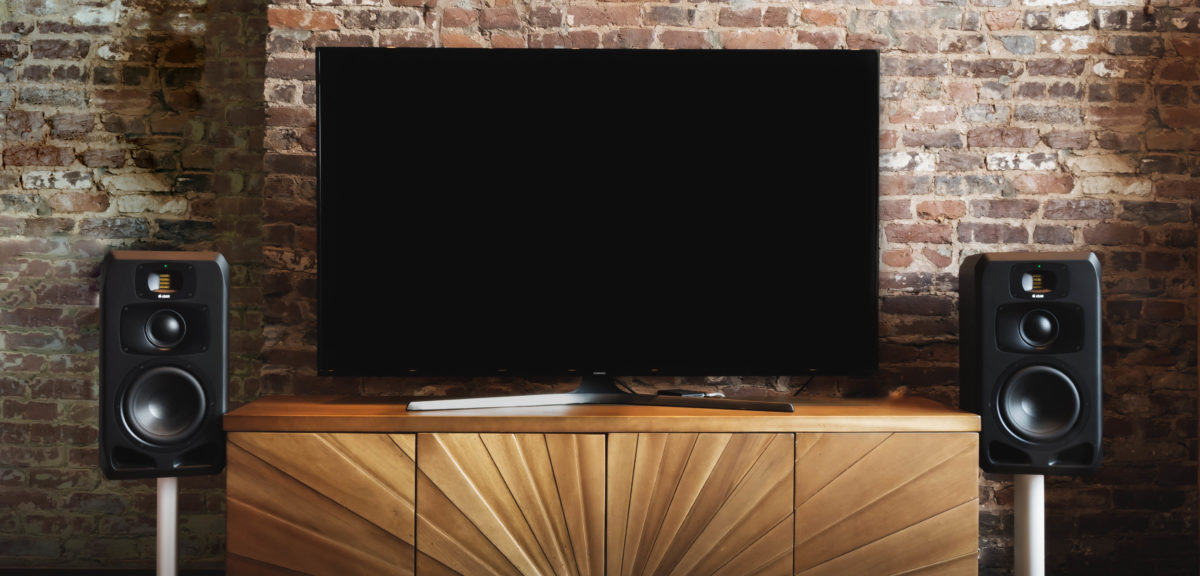
As manufacturers of professional loudspeakers, the likes of which are mainly used in recording studios, we strive for the highest in quality audio playback and reliability. Our speakers and headphones are valued for their authentic and unique sound by producers and musicians around the world. The numerous awards our speakers have received in the trade press are further proof of ADAM Audio’s outstanding quality.
The ADAM Audio flagship S Series, in particular, impress with their linear frequency response, wide and consistent dispersion and high resolution. All of which are indispensable in a professional recording studio environment, enabling a very detailed sound reproduction.
The S Series is the combination of many years of advanced in-house engineering innovation at ADAM Audio, and the latest computer-aided design techniques. It deliberately does not employ off-the-shelf loudspeaker technology, but instead relies consistently on the in-house engineering innovation that makes the legendary ADAM Audio sound possible.
A very special listening experience
Listening, mixing, and mastering with S Series monitors in the studio provides a very unique listening experience that many also want to experience in their own living room. Although the S Series was designed for professional studio environments, they are increasingly found in private households as hi-fi loudspeakers. It is not just the look that suggests the S Series are a tool for the professional market, they also come with a sound that highlights the nuances that many hi-fi speakers cannot reproduce with such precision.
To create a more exciting listening experience, most traditional hi-fi speakers often have a higher bass and treble. This adjustment distorts the playback and creates a reproduction of the audio material that is not true to the original. With the S Series, however, you hear the music just as the sound engineer, composer & musician intended.
The S Series are particularly characterized by their precise playback of high frequencies. Using the S-ART tweeter, the speakers can reproduce up to 50 kHz.
It is now known that the human ear can perceive a maximum of tones of up to 20 kHz. This wider frequency extension up to 50kHz ensures a flatter phase response within the audible range, ensuring that what you are hearing in the high-end is accurate and distortion-free.
Versatile calibration options for every environment
In order to make room-specific adjustments, all S Series loudspeakers have a digital signal processor (DSP), providing filter functions so that the loudspeakers can be individually adapted to the given room conditions, or to your own listening tastes.
The built-in high-performance amplifiers in our S Series, offer power reserves, giving you extensive dynamic range, whether you’re listening to rock, electronic or classical. They are precisely installed to the speaker’s chassis, eliminating the need for an external amplifier and extra cabling. Symmetrical analog & digital AES connections via XLR protect the cable routes from interference, ensuring you have the cleanest signal path and reproduction quality.
Handcrafted in Berlin
In order to meet our high technical and quality requirements, each and every S Series loudspeaker is manufactured and tested in our Berlin production hall. We put a lot of time and attention into the S-ART tweeter, which is folded by hand under the strictest quality controls.
This is how we ensure the tweeters achieve the highest levels of satisfaction, by reproducing the finest details with distortion-free and natural-sounding dynamics. These are the cornerstones of ADAM Audio’s worldwide reputation as a leading manufacturer of studio monitoring technology, which is appreciated by thousands of successful producers, engineers, artists
Frequently asked questions
General Questions
- What is the difference between an active and a passive speaker?
An active speaker uses separate amplifier units for each individual transducer, most of which can be found inside the speaker cabinet. These are connected to the source devices and to a pre-amplifier via the connection panel on the back of the speaker. The amplifier and transducer are optimally matched to each other in terms of frequency and power.
A passive speaker, on the other hand, consists of a cabinet, transducers and driver crossovers. It needs an external amplifier to work, which operates the passive speakers through a cable connection. It is not always guaranteed that there will be a harmonious interaction between the loudspeaker and amplifier every time.
- Why do people like to talk about classic active two-way loudspeakers?
What makes them classic, is that they use an active crossover to divide the respective frequency ranges for the respective sound transducers.
- What are the other advantages of active loudspeakers?
Adjusting frequency ranges with digital filters can be achieved with greater detail and precision than with usual passive crossovers. This means that the transducers can be used optimally, and those frequency ranges that would otherwise lead to undesirable audible colouration, can be avoided. By using cut filters, the overlapping area between the individual transducers are kept narrow. This makes the vertical dispersion behaviour more balanced, which means that the exact alignment of the speakers at ear level becomes less important.
Passive crossovers can heat up. This, plus additional unwanted distortions within the components such as microphonics and hysteresis of coils, change their filter characteristics. Digital filters however, always function as intended by the designer, even with the unavoidable heating of electronics.
Another advantage of active loudspeakers are the tonal and sonic benefits resulting from the direct coupling of transducers and amplifier power amplifiers. The direct control or damping of the power amplifiers, without the losses and complex resistances of a passive crossover, causes the transducers to resonate in and out faster.
When using energy-efficient power supplies, generously dimensioned transformers are not necessary, which in turn plays a role in the weight, space requirements and energy efficiency of the speaker. Due to the minimal waste heat generated by Class-D amplification, there is only a moderate amount of heat generated inside, which in turn benefits the longevity of the electronics. The amount of heat generated from comparable class A or A/B amplifiers would be significantly greater.
Active loudspeakers often have adjustable filters that allow the loudspeakers to be adapted to the respective installation situation (corner of the room or near field) as well as to the environment (undamped sound-reflecting or damped sound-absorbing room).
- What must be considered when selecting active loudspeakers?
The listening distance and expected level reserves play a major role. The greater the distances and volumes, the more powerful the speakers need to be. Large, very low-frequency speakers can over exaggerate individual room resonances, resulting in an inhomogeneous, overemphasised low-frequency range, when compared to smaller, less bass-strong models.
Spatial filtering is available to allow adjustments to the room set-up, according to personal listening tastes. Additionally, reverberant, completely undamped rooms, or the opposite of such, reduce the sound image. These effects can be compensated by use of integrated filters, although these are not magic-bullet fixes.
Technical questions
- Are there other types of active loudspeakers?
Partially active loudspeakers are less common, which are only active in the bass range, which means they have their own amplifiers. The remaining passive transducers depend on an external amplifier.
This has the following advantage: because the external amplifier is freed from doing the more power-intensive, low-frequency work it can therefore be smaller. Even low-power tube amplifiers can be used with ease.
- What do we mean by DSP-based active speakers?
In contrast to active speakers with an analogue active crossover, a digital signal processor (DSP) takes over the processing of the signals and also acts as an active crossover (DSP crossover). For this, analogue input signals must be converted to digital beforehand. This digital crossover ensures that the individual frequency ranges are tailored to the respective sound transducers, which are optimised for their intended use, and then drive either a classic class A/B or class D amplifier, which sets the sound transducers in motion.
- What do we mean by master-slave constructions?
Here, as the master, the loudspeaker has a connection and amplifier module and, if necessary, an internal streaming module. The slave speaker is usually passive, and is connected to and powered by the master via a conventional speaker cable.
- What is Class-D amplification?
The Class-D amplification concept stands for high efficiency, with minimal heat loss. A stable power supply feeds transistors that operate with an on/off switching mode, amplifying the transmitted musical signals through pulse width modulation (PWM). A low-pass filter before the signal output ensures that any high-frequency signal components that have been added by the PWM — but do not belong to the music signal — are cut out.
In contrast to the characteristic functioning of Class A/B, or to the continuous Class A operation, high efficiency is possible due to the permanent switching operation of the transistors.
This means that energy is not unnecessarily converted into heat, which in turn results in a lesser needed cooling surface. Thus, high efficient power output, passive cooling and small cabinet dimensions are no longer a contradiction.
- What are symmetrical signals?
In the professional field, having balanced audio signals is the standard. The aim is to ensure the best possible transmission quality over long cable distances. The key here is an additional wire that mirrors the useful signal with reversed polarity. In this way, interference factors affecting the cable as a whole can be eliminated at the end by adding the now two signal-carrying wires: the useful signal remains untouched and the interference cancels each other out.
Before first start-up
- What needs to be considered before connecting active speakers?
The power must be off before connecting to the source devices. Depending on the set-up situation, use long, high-quality cables, preferably a balanced XLR cable, which is less susceptible to interference and more suitable for longer distances.
- How can active S-Series speakers be connected to a CD player, network player or computer?
Having uncompromising playback via compact studio monitors, such as the ADAM Audio S-Series is possible. From an audiophile point of view, these loudspeakers are ideal, because the short signal paths and the integrated spatial filters not only allow users to better master critical set-up situations, but also allow music playback according to personal listening preferences. Thanks to the optimally customised pairing of transducers and amplifier power, ADAM Audio S-Series studio monitors achieve a superior low-frequency reproduction. Even in tightly dimensioned rooms, this manages to create space, while still ensuring a fully integrated audio solution, which in turn allows the use of a wide range of playback devices.
The ADAM Audio S2V, for example, offers an analogue (XLR) and digitally balanced (AES/EBU XLR) input on its rear panel. Both types of connection are recommended due to their higher noise resistance, especially when using longer cables, and when compared to unbalanced RCA cables. If, for example, the CD player is not placed directly next to the monitors, but rather near the where the user is seated, this is ultimately unproblematic. Of course, it is optimal if a CD player has a variable line-out and corresponding balanced XLR outputs. Then, after each S2V has been connected to the CD player via an XLR, the volume can also be controlled remotely via the user’s remote control.
Alternatively, in case a gaming console, the sound of the TV, or even the output of a Blu-Ray is to be considered in addition to the CD player, then a remote-controlled pre-amplifier with its digital S/PDIF inputs needs to be considered. Inexpensive controllers that regulate the volume without loss also come in handy.
High-quality source devices are often able to send their output signal via a digital AES/EBU output. In this case, the AES/EBU output of the source device is connected to the corresponding input of a loudspeaker. The second loudspeaker is supplied via another digitally balanced cable. This method of signal distribution is also called daisy-chaining.
If you want to make things easy for yourself, simply connect to a network server and control both the volume and the selection of music content from the comfort of your sofa. Or connect with your computer or laptop directly via USB. Here you can access music from the cloud via Tidal, or Internet radio, for example. Airplay 2, Bluetooth and content on a hard drive can also be played on the S2V, provided a network player is integrated.
- How do spatial filters help?
If the room is acoustically problematic, use a listening position that is close to the speakers, this will reduce the room’s contribution to the sound. Spatial filters not only allow the sound to be adjusted to personal listening preferences, but they can also counteract acoustically critical factors. For example, if the room is acoustically bright and full of reverberation, a softer sound image can be created by reducing the level in the high-frequency range. Conversely, boosting the level also helps in overdamped rooms.
If the speakers are close to any walls or corners and the bass range increases, lowering the level via the local filters can help. If the room is too large, the energy output in the bass range can be increased.
